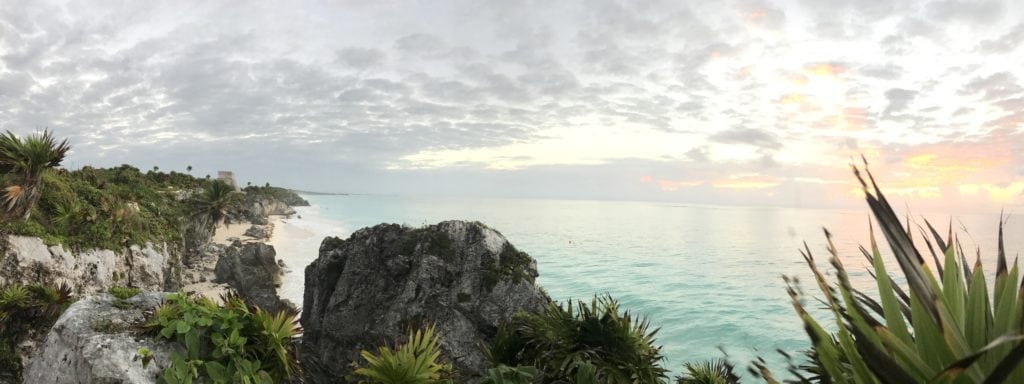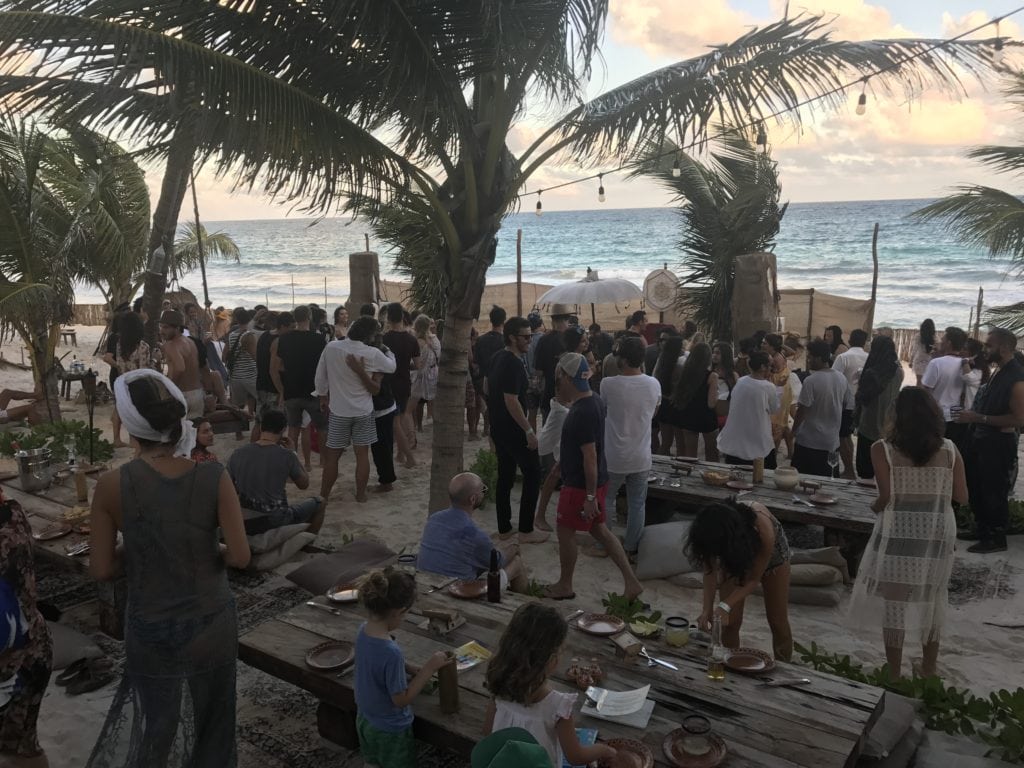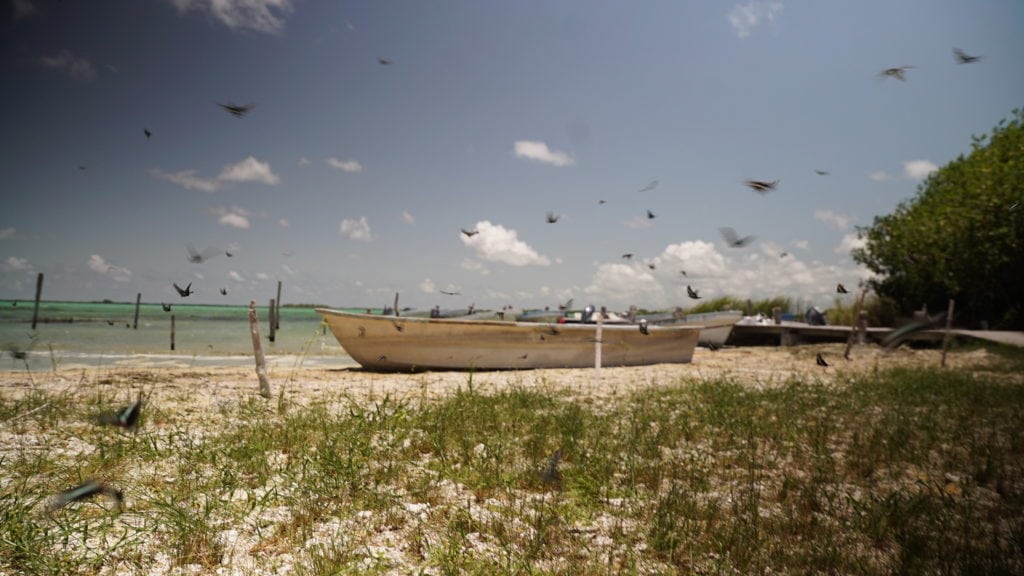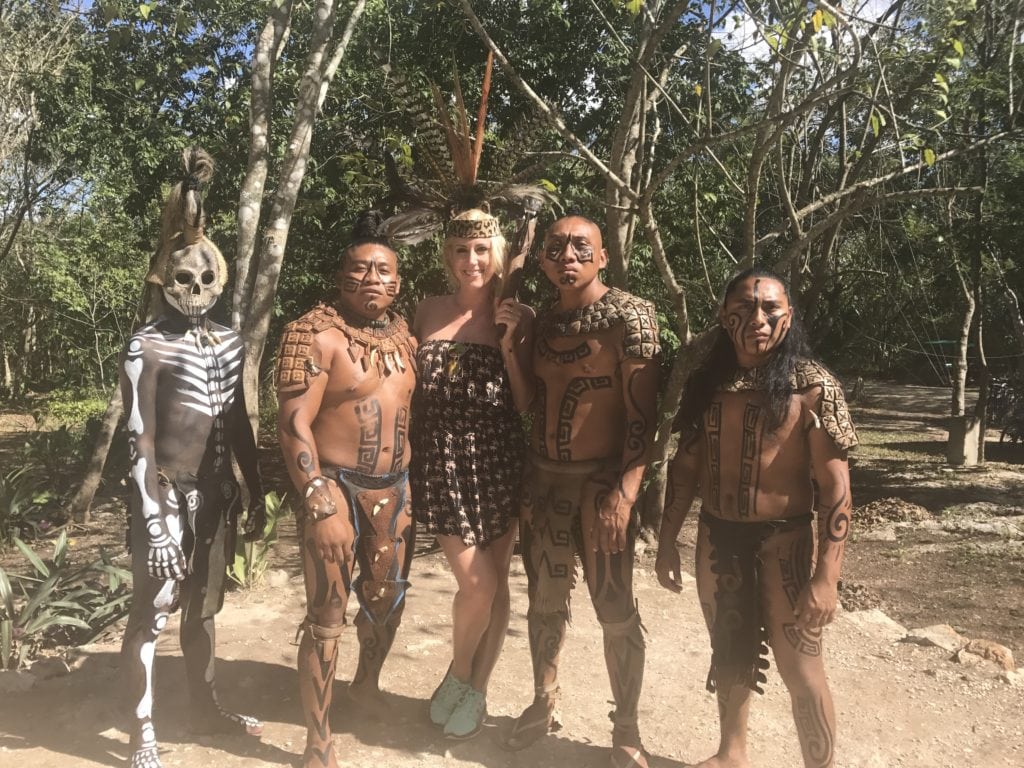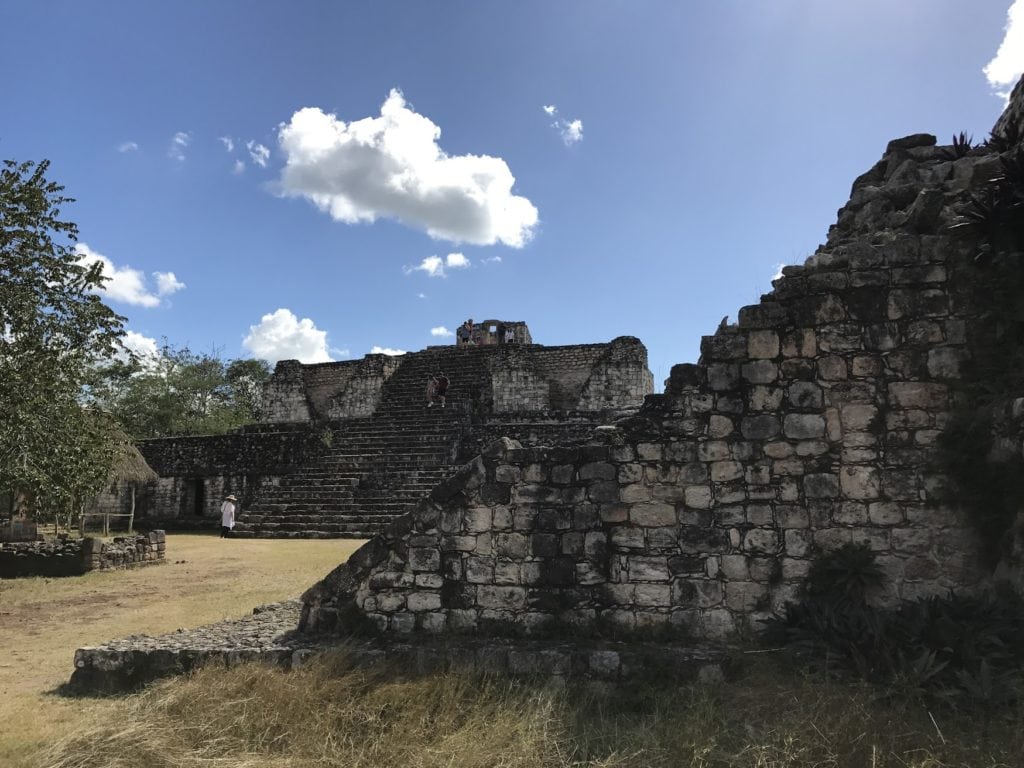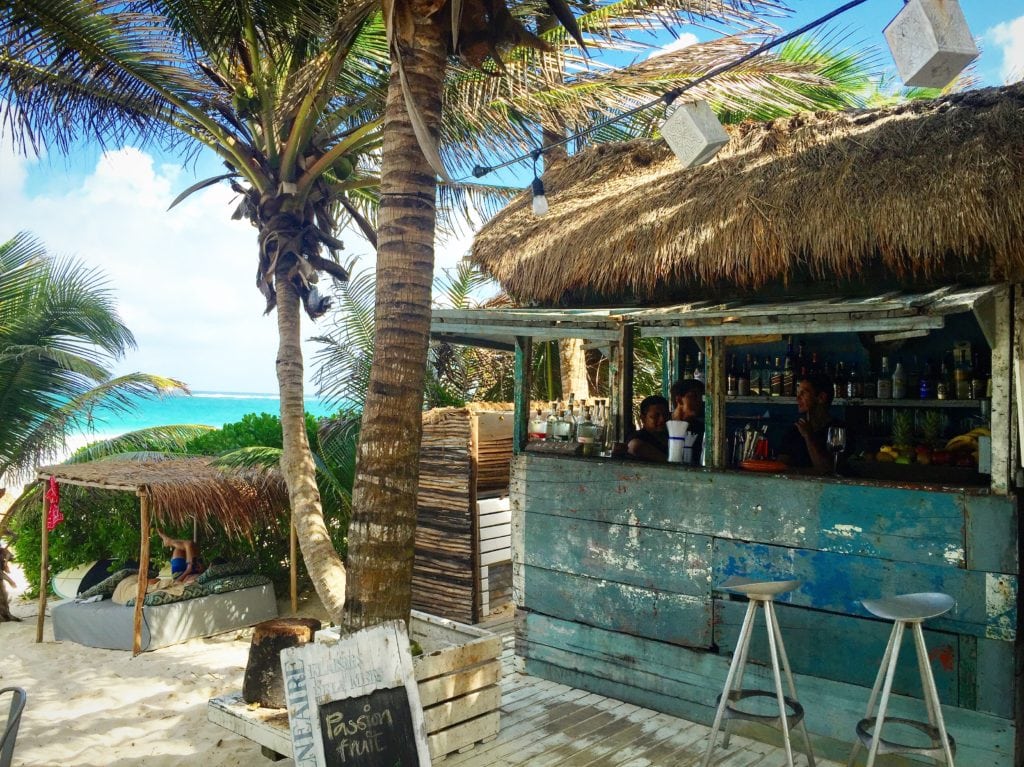Modern Applications of Mayan Influences
Mexico’s numerous white sand beaches are at the top of travelers’ list from around the world vacation plans, but tucked away on the Caribbean coastline of the Yucatan Peninsula sits Riviera Maya and the well-preserved ruins of the ancient mystical Mayan port city, Tulum. The Mayans were astronomers, mathematicians, philosophers, architects, sculptors, and warriors. Zona Maya is a window into the cultural identity of the Mexican Caribbean.
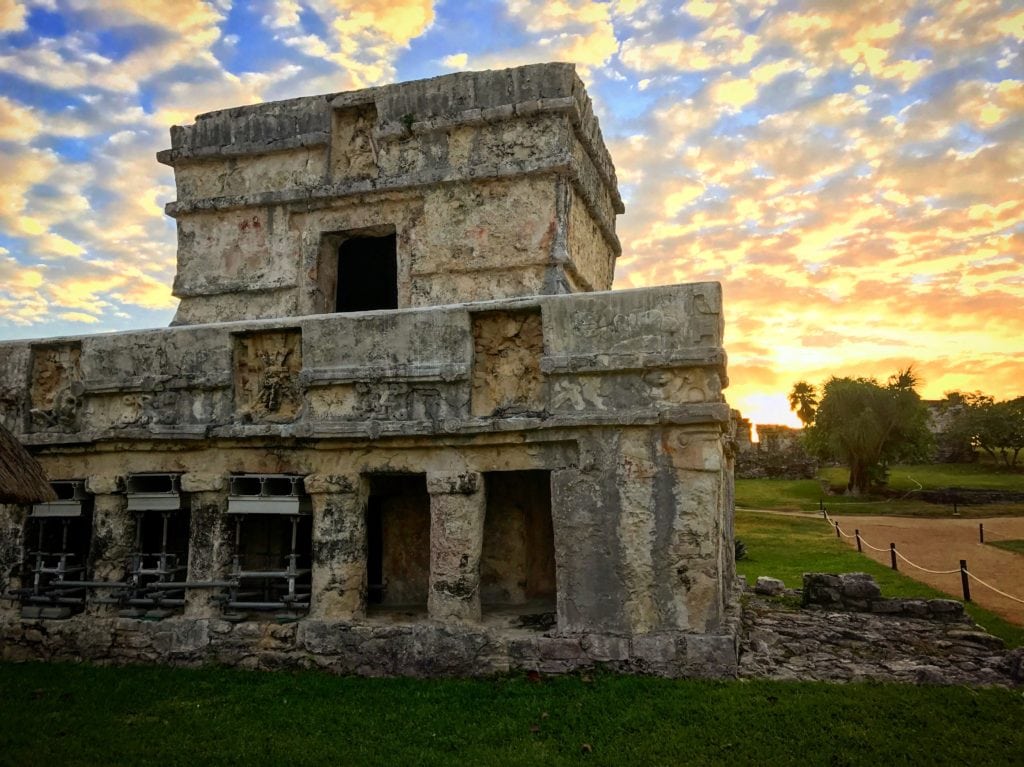
PRIVATE SUNRISE TOUR OF THE TULUM RUINS WITH JOURNEY MEXICO
“The Mayan archaeology and the contemporary Mayan communities with their living language and traditions, the beaches, reefs, awe-inspiring cenotes, dense jungle and wildlife all come together to offer visitors once-in-a-lifetime experiences,”
says Dario Flota Campo, Director at Fid. de Promoción Turística de Cozumel y Riviera Maya.
There is explosive in-bound tourism and hotel investment across Riviera Maya. The region is increasingly accessible from major U.S. hubs- only three hours direct from the East Coast and five hours from California, making long weekend getaways possible and bringing many repeat visitors to the area. The beaches, cenotes, and jungle are unparalleled in beauty with great weather year-round.
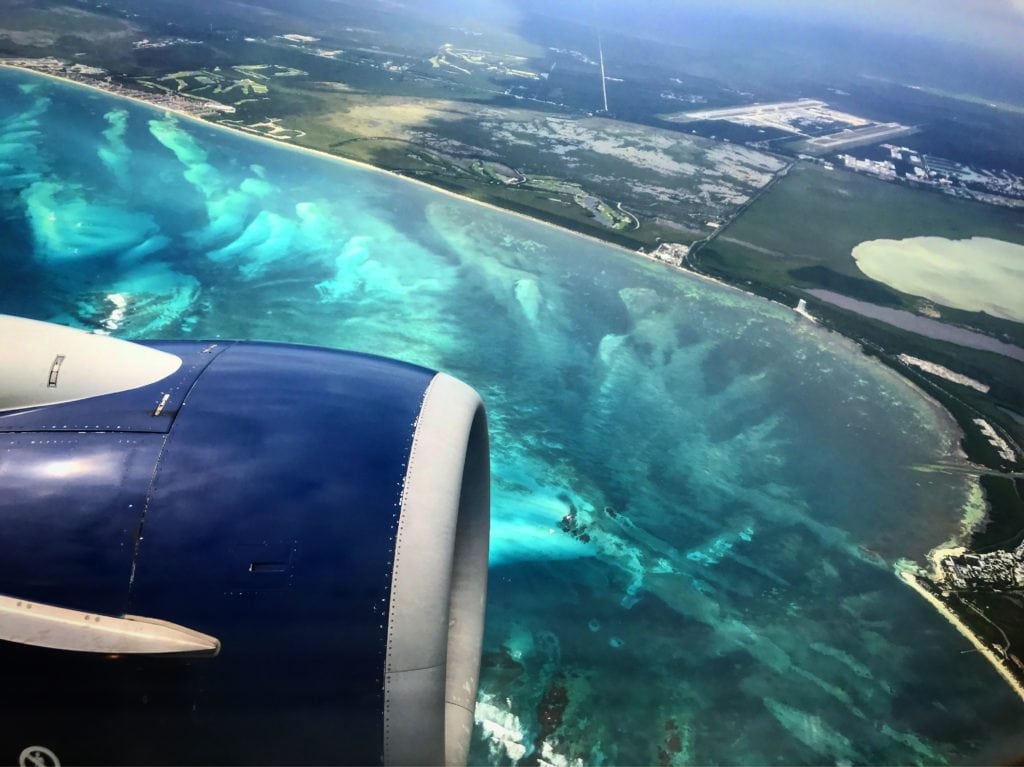
ARRIVING INTO CANCUN AIRPORT
One of the many new accommodation offerings in the region, HABITAS, is working to organically allow travelers to live as close as possible to nature without sacrificing luxury, and to organically embed Mayan influence into the experience they offer their guests,
“The energy here is alive. People have lived here for thousands of years and it is one of the spiritual centers of the Mayan culture. Visitors come to connect to the energy that is just to the left of the ordinary. An amazing culinary scene and a truly cosmopolitan gathering of people make this little stretch of beach truly special,”
shares Zach Bell, Partner of HABITAS.
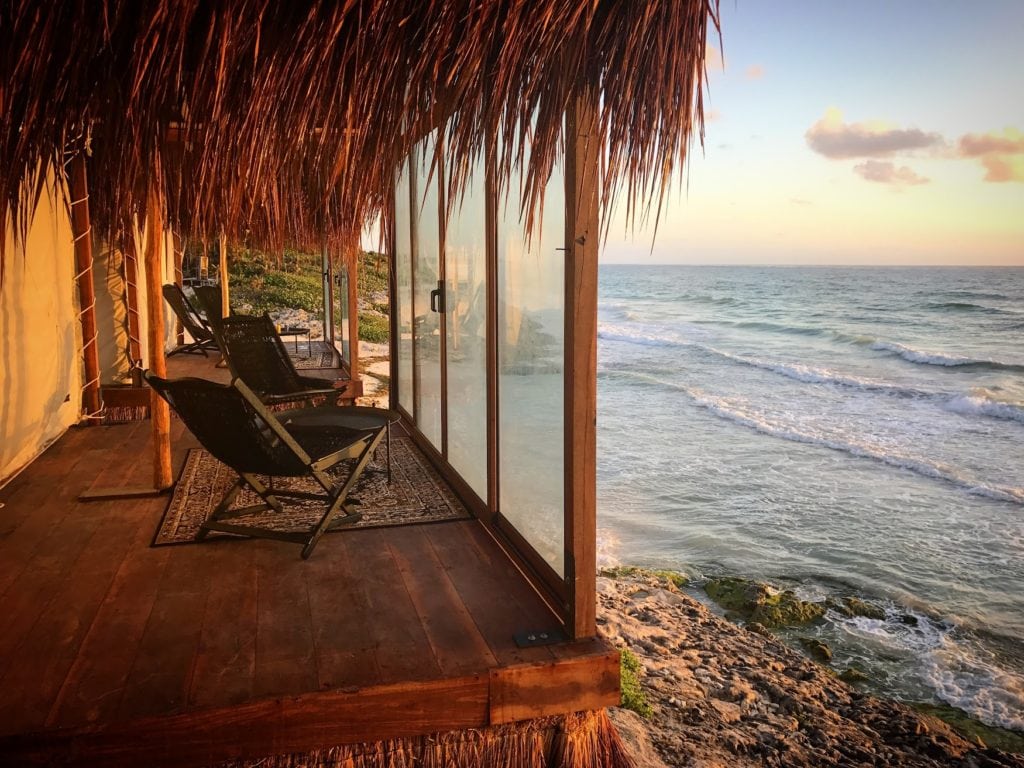
SUNRISE FROM A BEACH FRONT TENT AT HABITAS
The road that runs alongside Tulum Beach is populated with bohemian chic hotels, popular restaurants, shops, yoga studios, matcha bars and the well-heeled (or in this case intentionally barefoot) crowd that frequent them.
CATCH A SUNSET DJ SET AT THE POPULAR NOMAD HOTEL
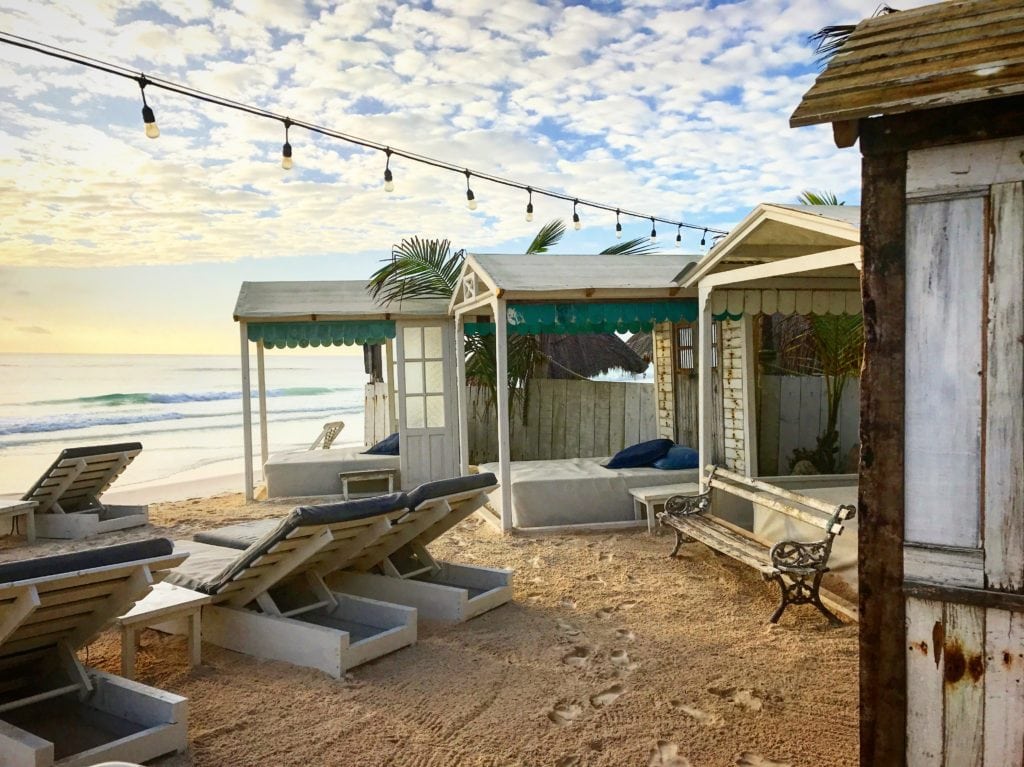
THE VIEW FROM THE POPULAR POSADA MARGEHRITA RESTAURANT
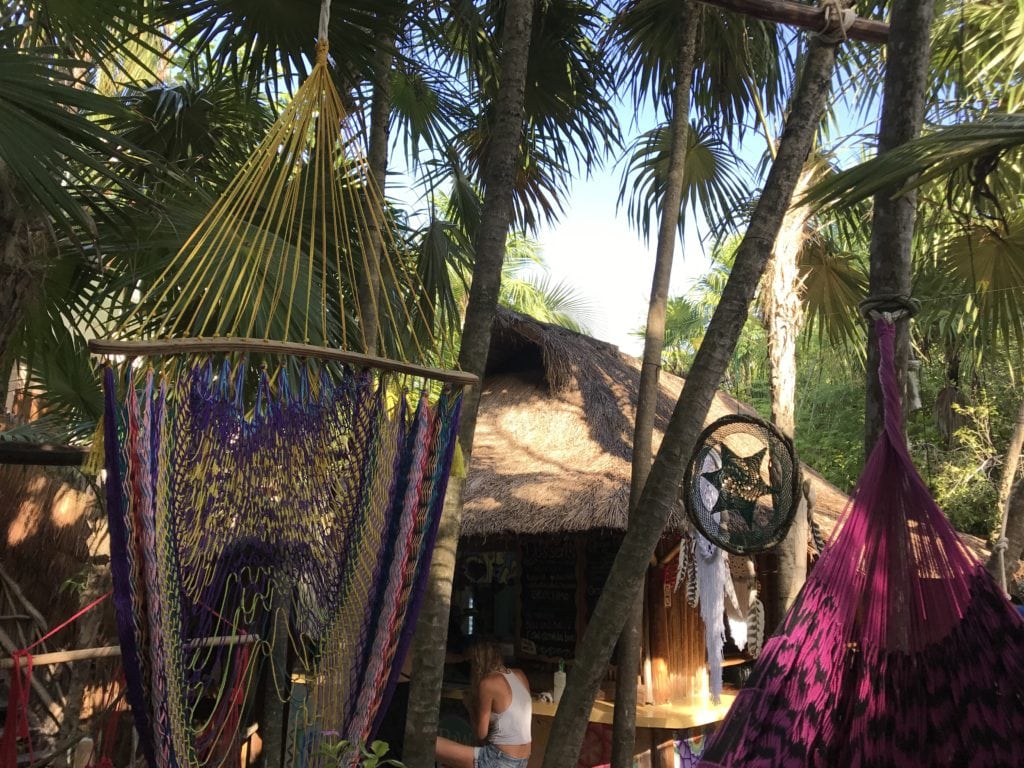
A MATCHA BAR ON TULUM BEACH
If travelers look beneath the trendy and well-curated beach vibe surface, this stretch of road overrun by bicycles and the odd taxi that run from the ruins, centered around El Castillo (or castle) and down to the entrance of the Sian Ka’an Biosphere Reserve, a 1.3 million acre UNESCO World Heritage Site and it remains the largest protected area in the Mexican Caribbean. Inbound luxury tour operator, Journey Mexico take their adventurous travelers into the Sian Ka’an on a boat to visit the lagoons and some of the hidden Mayan Temples, to view the dolphins and swim with the manatees. Some of the most famous and naturally awe-inspiring Cenotes are also found in the reserve.
A FIELD OF BUTTERFLIES IN THE SIAN KA’AN
Matteo Luthi, COO of Journey Mexico, shares his experience of modern applications of Mayan influence and tradition in Tulum:
“If you listen, the language is still spoken in Tulum and is especially used in the surrounding villages. Travelers that are seeking an authentic local interaction with a modern Maya will be very surprised to see that the Maya people are very open and proud to share the knowledge of their ancestors.”
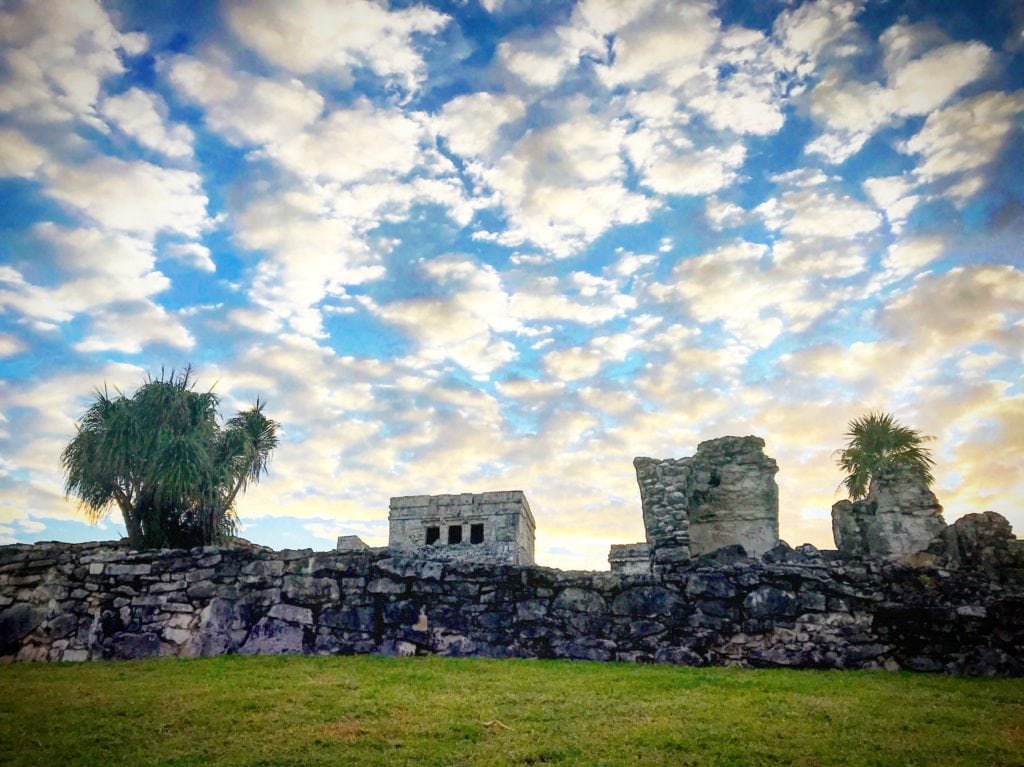
A PRIVATE SUNRISE TOUR OF THE TULUM RUINS WITH JOURNEY MEXICO
Matteo Luthi continues,
“We try and encourage travelers that consult us to experience the Mayan way of thinking through experiences, such as a simple private guided expedition of the Archeological Site of Tulum, a visit of the Biosphere of Sian Ka’an or requesting permission of the Mayan Landlord in order to swim in a hidden Cenote.”
AUTHOR MEETING A FEW MAYAN WARRIORS AT THE EK’BALAM RUINS
While in Sian Ka’an, explore the ruins and rebirth of Tulum through the Mayan communities who know the best- Mayan locals are employed to ensure the development of the area supports the sustainability of its history, culture and traditional medicine practices.
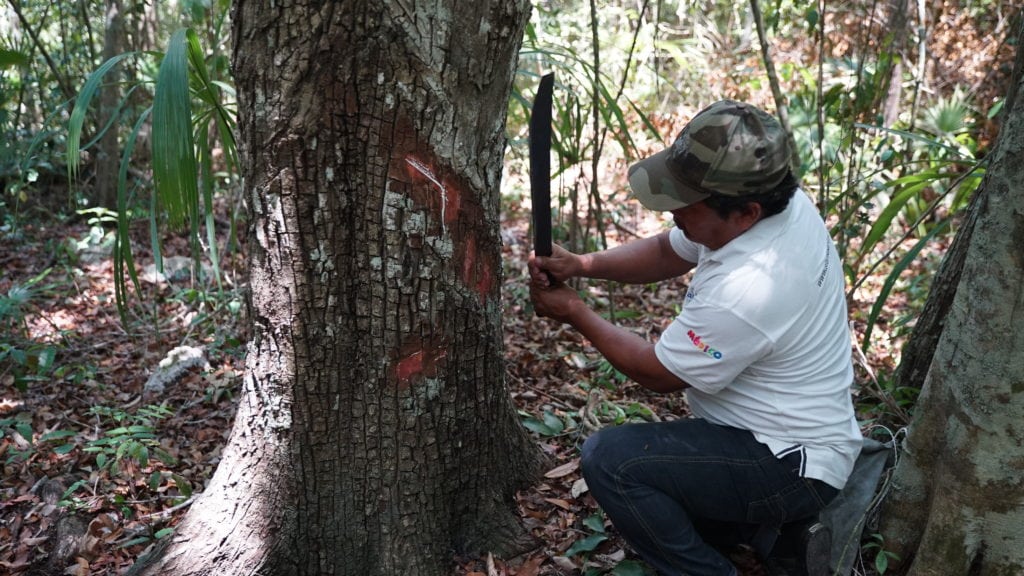
VISIT SIAN KA’AN DEMONSTRATES HOW THE LOCAL MAYA COLLECT GUM FROM THE GUM TREE
“The most refreshing is floating in the canals. You’re surrounded by mangroves, listening to the sound of nature. It’s an unforgettable experience and builds environmental awareness of this UNESCO World Heritage site.”
explains Román Caamal of Visit Sian Ka’an.
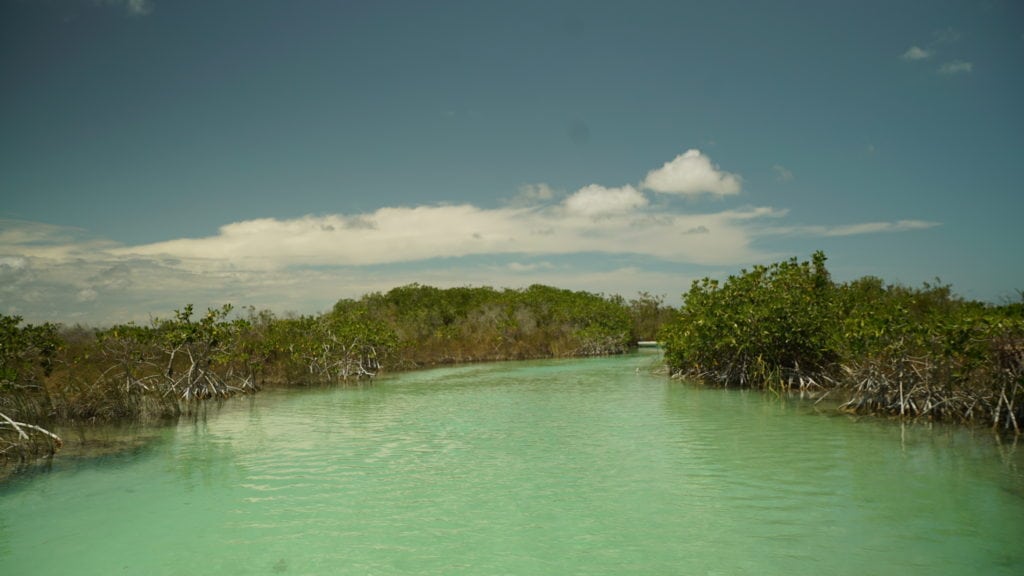
THE MANGROVE CANALS OF THE SI’AN KAAN
For local interaction, visit the Maya Ka’an to learn about the historic and cultural legacy of the Maya through sustainable development projects in the Mayan communities, such as handicrafts and medicinal arts. Here the Maya play an active role in the conservation and sustainable use of natural resources, to improve their quality of life.
The area just north of the town of Tulum to the area called Casa Cenote is considered Tulum National Park, which is home to mangroves, secluded beaches, cenotes and endangered species like sea turtles.
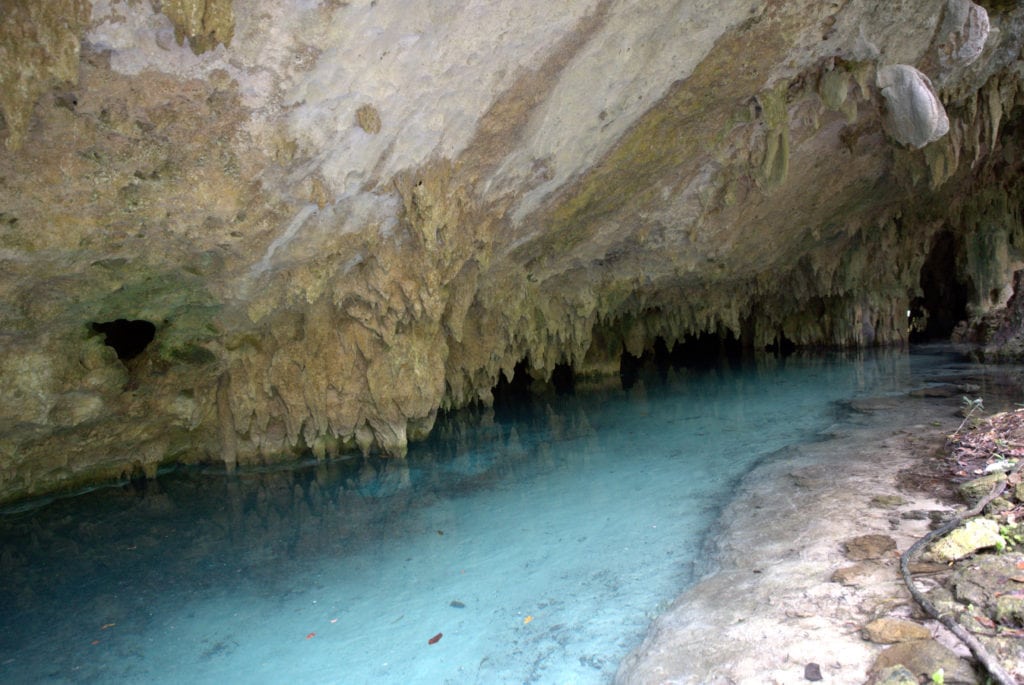
AN UNDERGROUND CENOTE
La Nueva Vida de Ramiro was one of the first hotel properties to open in Tulum in 1998 before the destination became the hotspot we know it to be today. Nueva Vida is the manifestation of Oscar Carreno’s dream: to create a totally eco-friendly and environmentally-focused hotel. From the beginning, the heart of the owners and hotel were in the right place, focused on embracing and preserving the area they were to develop.
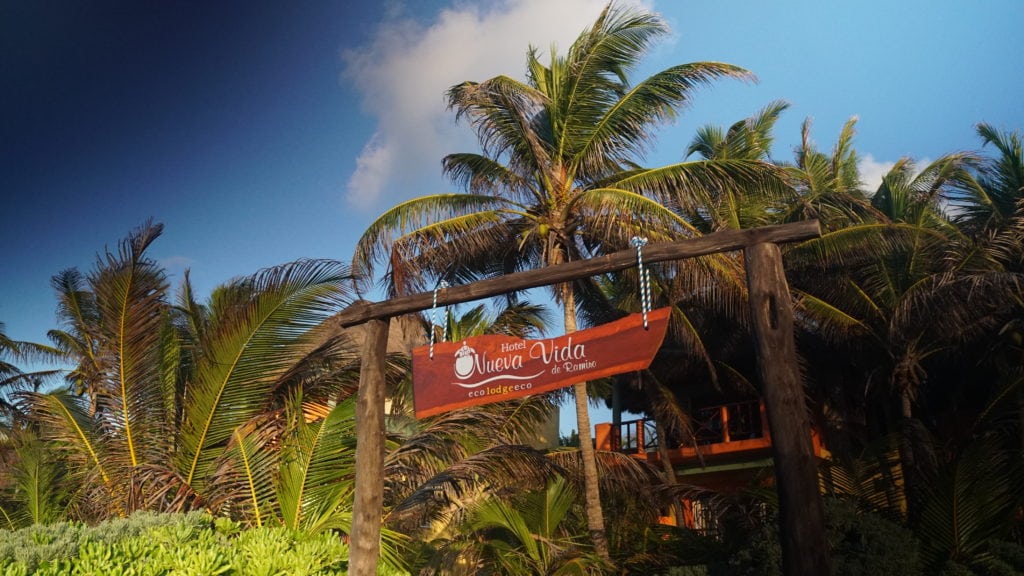
A VIEW FROM THE BEACH OF LA NUEVA VIDA DE RAMIRO
Today, the focus and tradition live on. Jeronimo Carreno, son of Oscar and Director of Operations, explains some of the property’s practices and continued efforts.
“It is the only hotel that works on 100% wind and solar power. All our products are recyclable, and we have a greenhouse where we grow and maintain native plants.”
But the most impressive effort to Jeronimo Carreno is one that takes place beyond its boundaries to support all of Tulum.
“All federal environmental organizations granted only one concession in Tulum to develop a sea turtle protection program,”
Jeronimo Carreno explains. It was awarded to Nueva Vida. The program encompasses hosting biologists, patrolling the beaches and monitoring the laying and hatching of four different species of turtles on the coast.
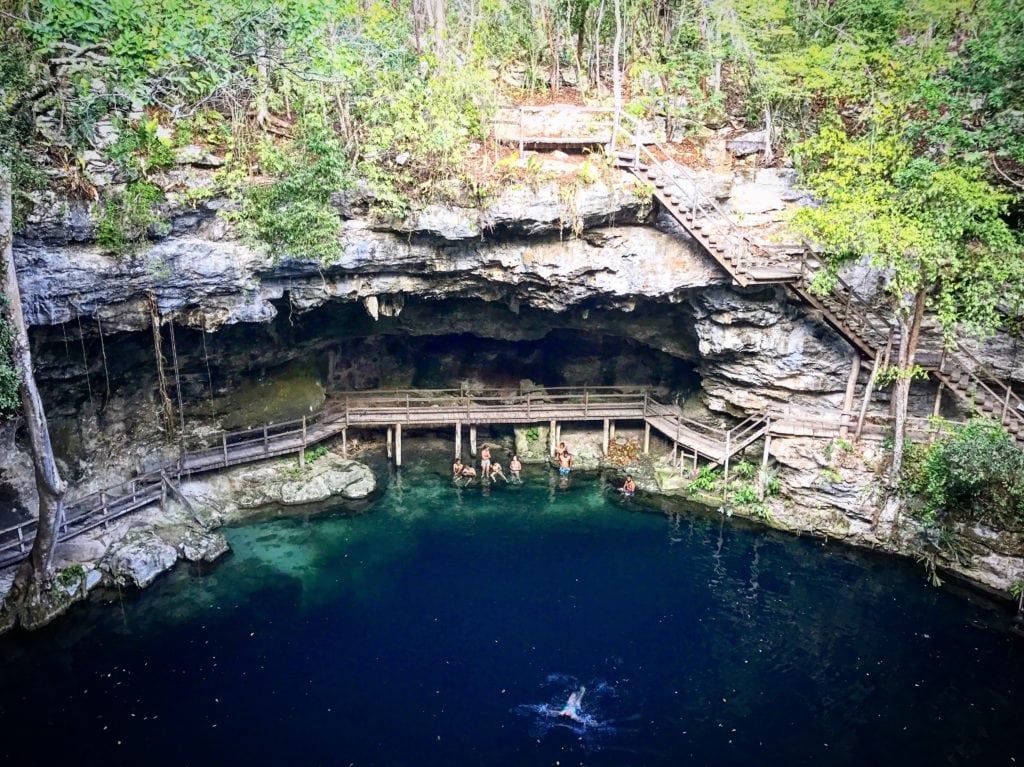
CENOTE MAYA, NEAR EK’BALAM
Tulum National Park is the largest contributor of fresh water to the sea via its underground rivers and cenotes. While a cenote is scientifically categorized as a natural limestone sinkhole, to the Mayan people they are also tied to traditions, ceremonies, and legends of their ancient civilization.
Pet Cemetery, arguably one of the best-known Cenotes because it takes travelers through underground rivers to cathedral-like caves studded with stalactites, all hidden below the floor of the jungle. For more off the beaten path experiences, visit the lesser frequented ruins in the area, such as the pyramid at Coba, Ek Balam, and Muyil which are uncrowded and retain the jungle vegetation.
MAYAN RUINS OF EK BALAM
Just outside the Sian Ka’an’s gates sits an intimate 100% sustainable seven-suite bed and breakfast on a private and serene stretch of beachfront and the only Platinum LEED Reviewed property in Mexico. Harnessing all of their electricity needs from the sun with a state of the art solar panel system as well as capturing all of our water from natural, free-flowing underground streams, Casa de las Olas is entirely self-sufficient. Due to their environmental consciousness and location, they cater to a group of forward-thinking, eco-aware travelers that are ahead of the curve.
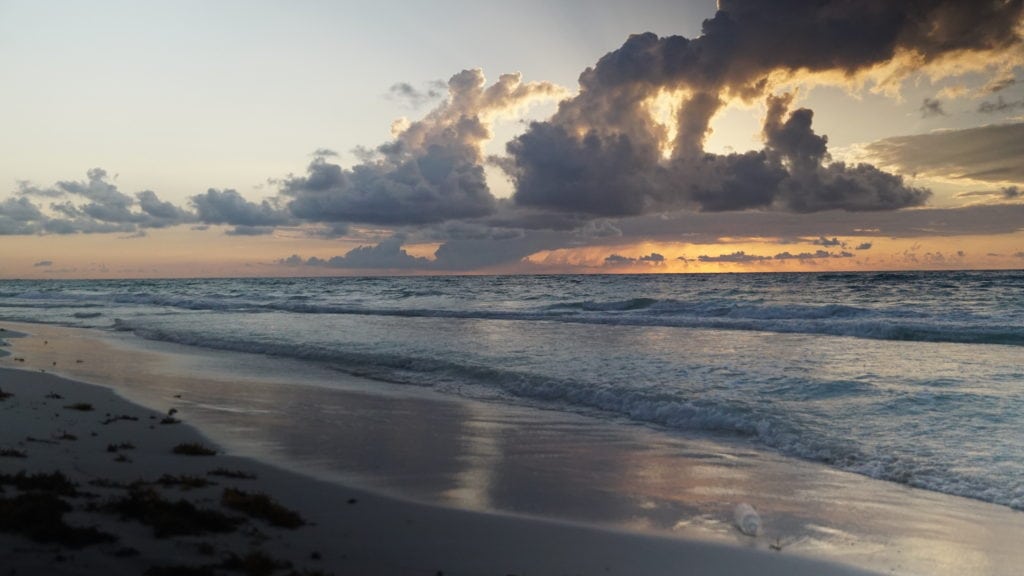
SUNSET FROM THE SECLUDED BEACH IN FRONT OF CASA DE LAS OLAS
According to Sam Shendow, Curator of Experiences at Casa de las Olas,
“We offer true sustainability- we are completely solar powered and the only Platinum LEED reviewed the property in Mexico. We offer a genuine experience with personalized, informal hospitality. We see our guests as friends and family and welcome them as such- sitting down to get to know each visitor over breakfast and sharing our favorite places and experiences. We also have an incredible location- being the last stop on the beach road before the Biosphere Reserve, we are secluded and private. We also have our ace, Lulu, in the kitchen, turning out the most delicious and authentic breakfasts around.”
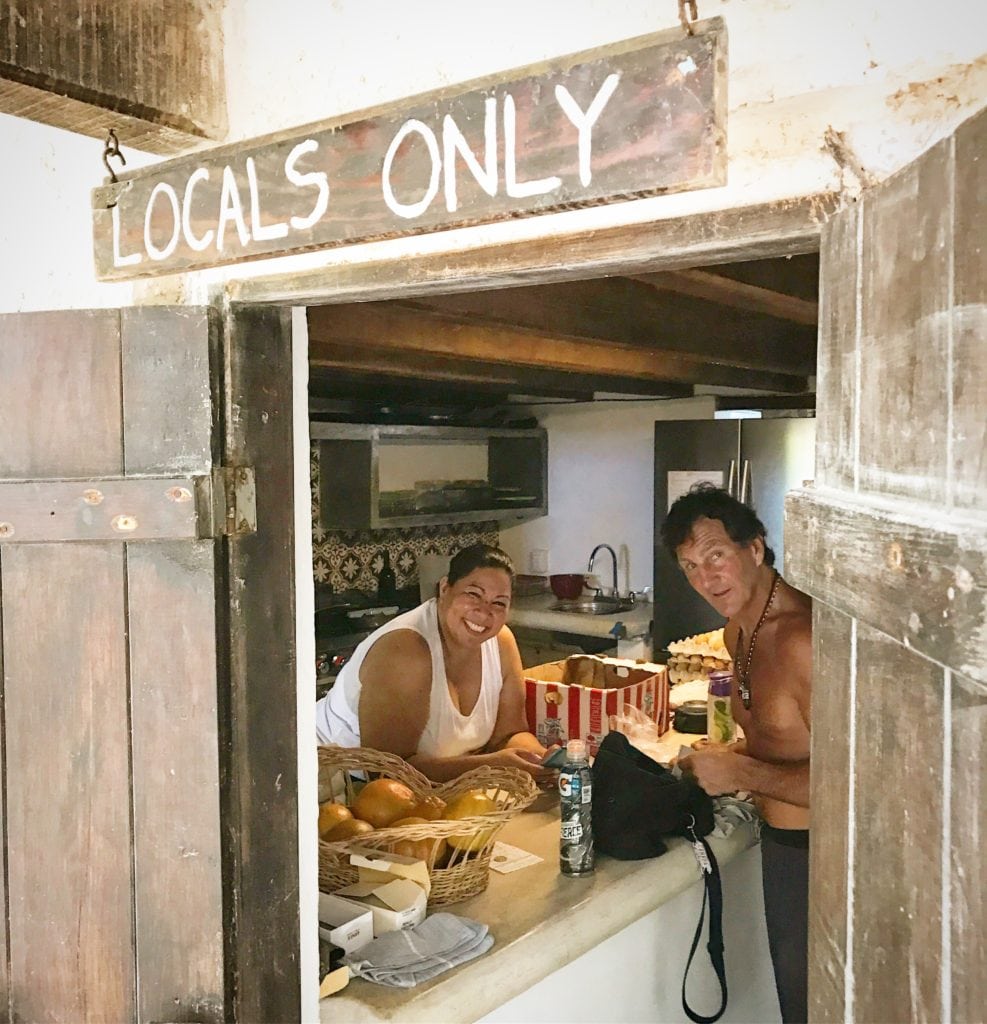
LULU AND BEAR IN THE KITCHEN AT CASA DE LAS OLAS
Tulum, though it has grown over the years, has retained a very relaxed and bohemian vibe with a lot of original character- it still feels like a small community with boutique options rather than the large resorts found in other parts of the Riviera Maya.
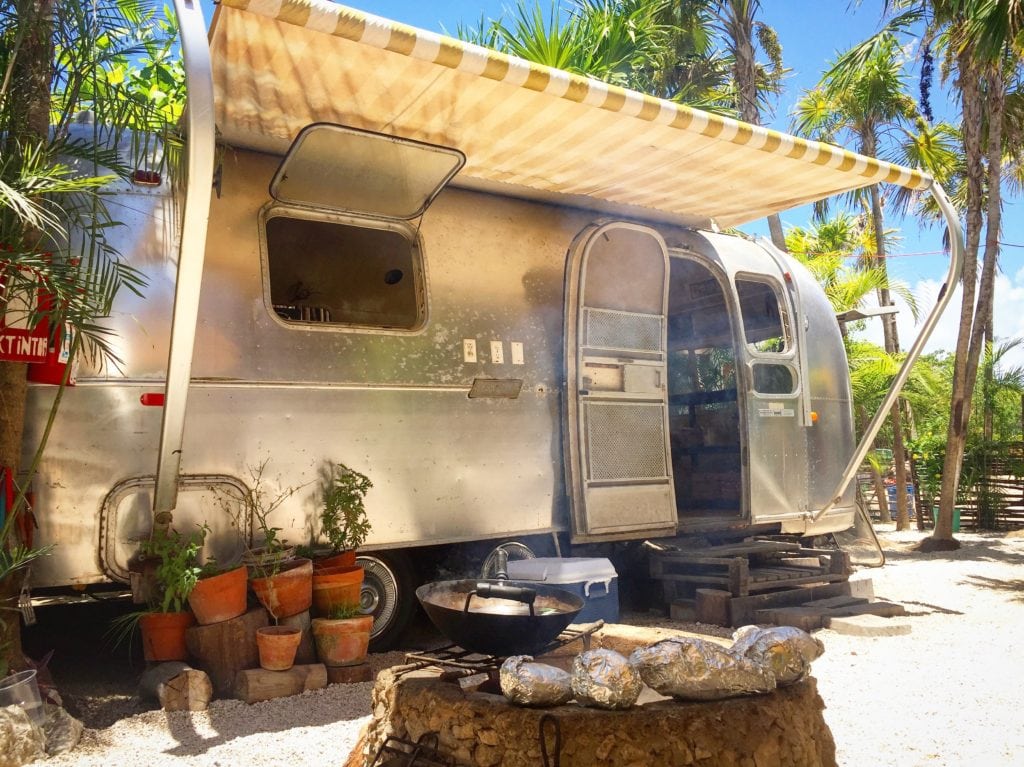
A TACO STAND ALONG TULUM BEACH ROAD
“For that reason, we attract a different sort of traveler, one who wants to immerse themselves in their destination. We are also blessed with incredible food, thanks to restaurants like Hartwood and the local Yucatecan cuisine, which have been getting publicity through events like the Noma pop-up,”
says Sam Shendow.
THE POPULAR BEACH BAR AT BE TULUM
“Most of our travelers, while they love the beach, are looking for a more in-depth visit to the region. Our guests are forward-thinking, eco-aware travelers looking for experiences beyond a margarita and a beach chair. I would say there is also a lot of wellness-focused tourism to Tulum and the surrounding area. Many visitors want to “unplug” from their hectic daily lives and get back to basics: healthy, fresh food; spending time in nature; yoga and meditation to restore their vital energy.”

DOWNTOWN TULUM TOWN
Hints of the ancient Mayan civilization are found everywhere, from the architectural details of the newer construction along the beach to the updates of traditional Mayan dishes and ingredients used in restaurants, like the favorite pork dish, cochinita pibil. However, the most prevalent Mayan cues appear in the wellness offerings and on the spa menus of 5-star luxury hotels and beach bungalows throughout the Zona Maya.
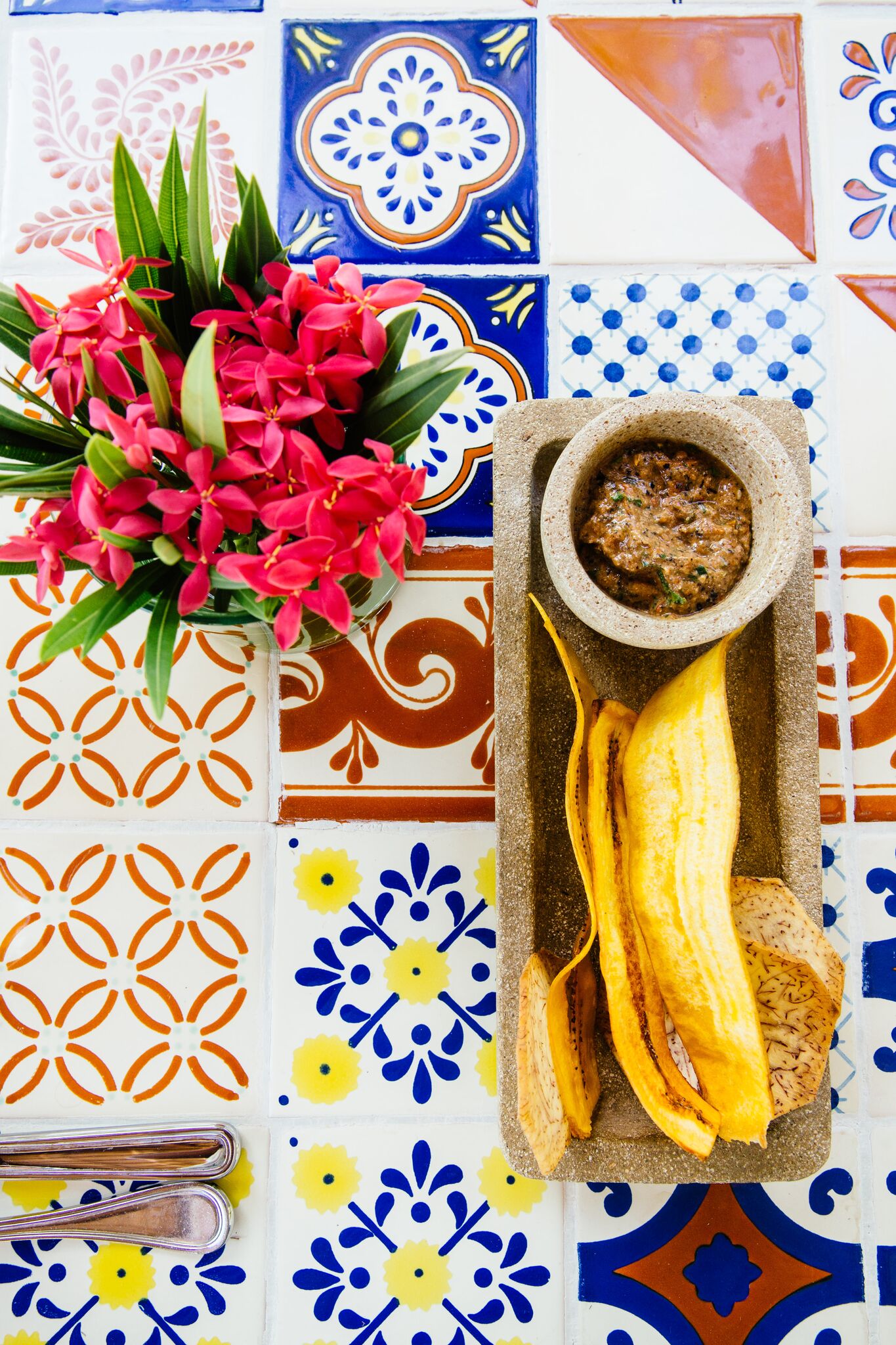
A TRADITIONAL MEXICAN SNACK, PHOTO COMPLIMENTS OF HOTEL ESENCIA
“In our region of Mexico, local Yucatan healers, shamans, and midwives have performed “sobada” – which literally means a “rub down” – for centuries. It’s a very specific and instinctive way of manipulating internal organs, muscles, and bones to treat many maladies. At Hotel Esencia we employ several of these specialists, known as “sobadores,”
states Kevin Wendle, Owner & CEO Hotel Esencia, he adds that,
“When I bought the hotel more than three years ago, I made it a priority to offer our visitors something truly magical, effective, and authentic to the region.We’ve done a lot of research on this subject and elevated our spa treatments accordingly.”
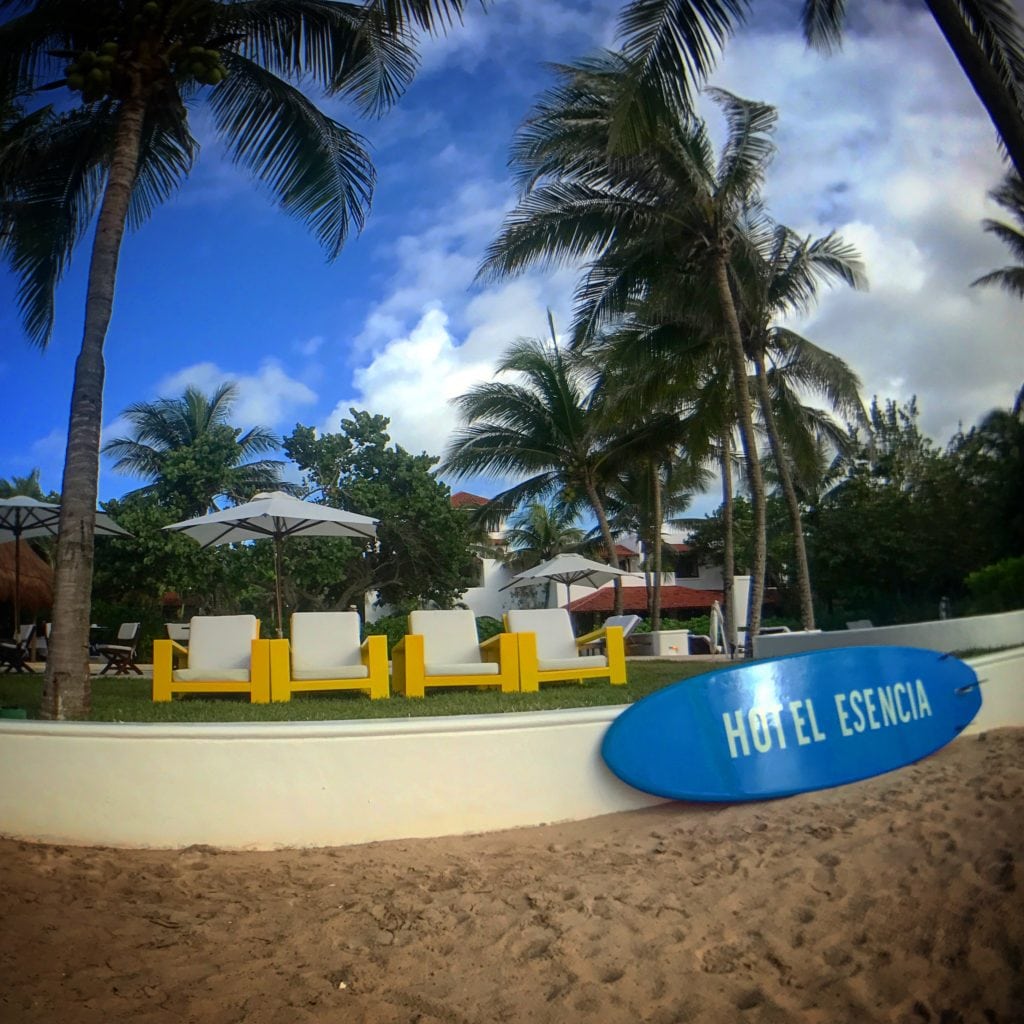
A VIEW OF HOTEL ESENCIA FROM THE PRIVATE BEACH
At HABITAS, Mayan traditions are also observed,
“Our entire wellness team has been learning and training from the Maya. We also make it a point to employ Mayan people. The team incorporate ancient practices with modern twists to keep the traditions alive today,”
says Zach Bell.
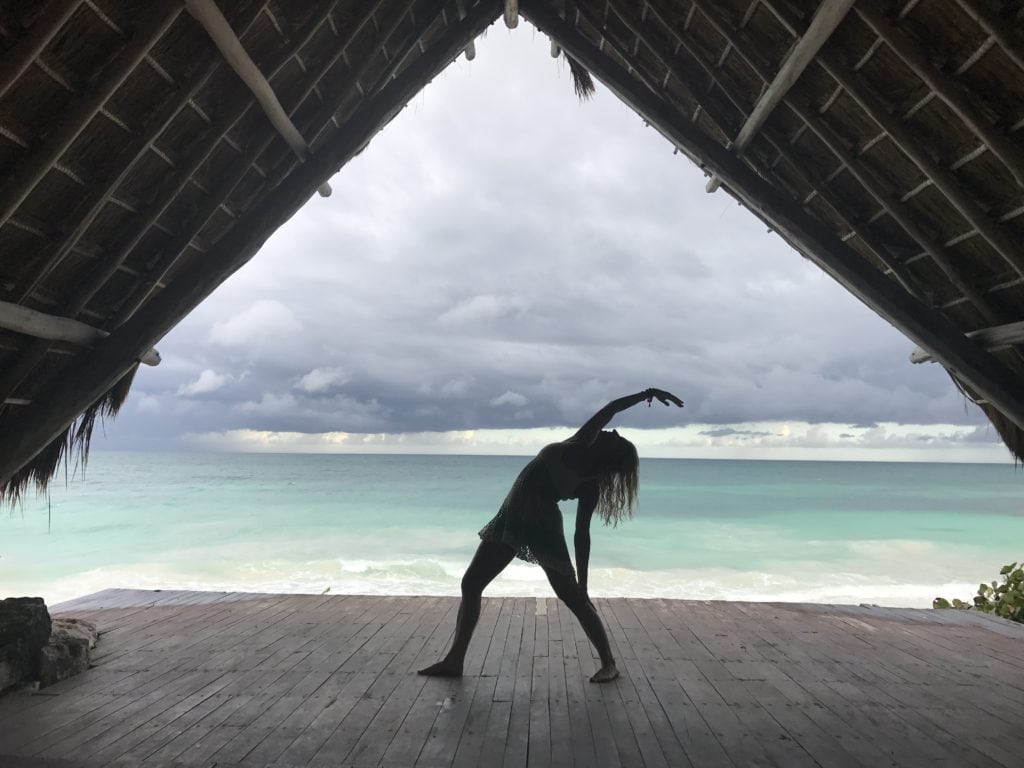
THE YOGA PAVILLION AT HABITAS
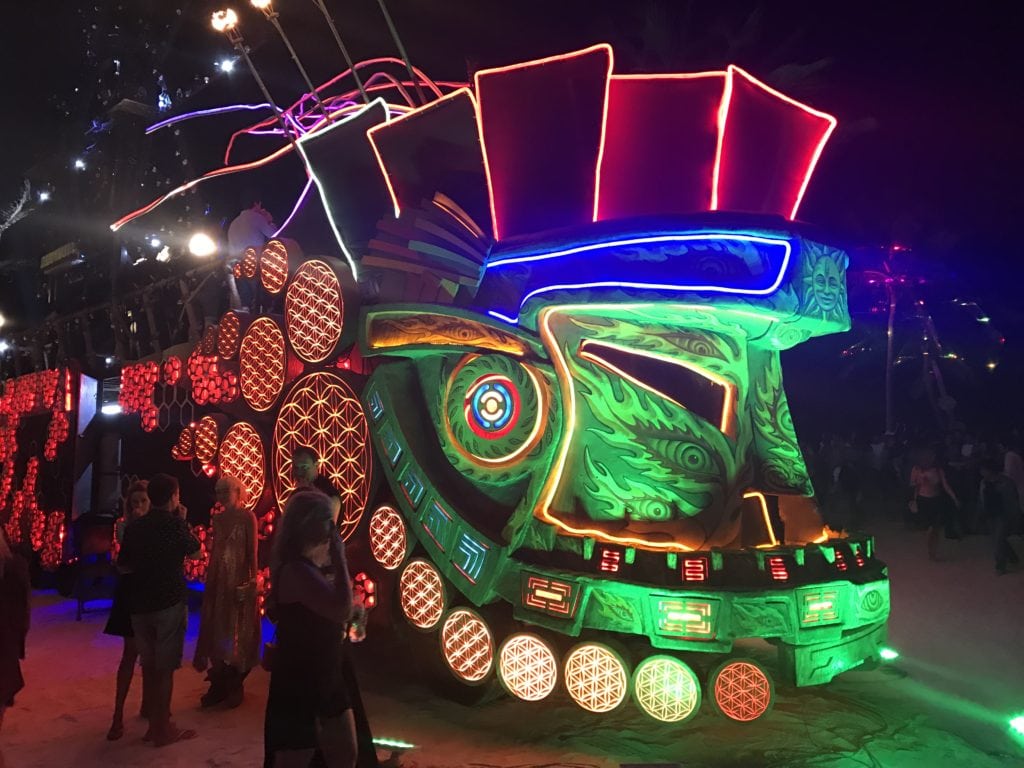
THE MAYAN WARRIOR ART CAR FROM BURNING MAN MADE A SPECIAL APPEARANCE FOR THE OPENING OF HABITAS
Ariel Crespo, Bureau Chief of CNN Mexico shares his personal experience,
“It has always been my aim to procure knowledge from ancient cultures to nourish my daily life. As you go deep into the history of Mayans, it is outstanding how avant-garde their culture was, particularly on health.”
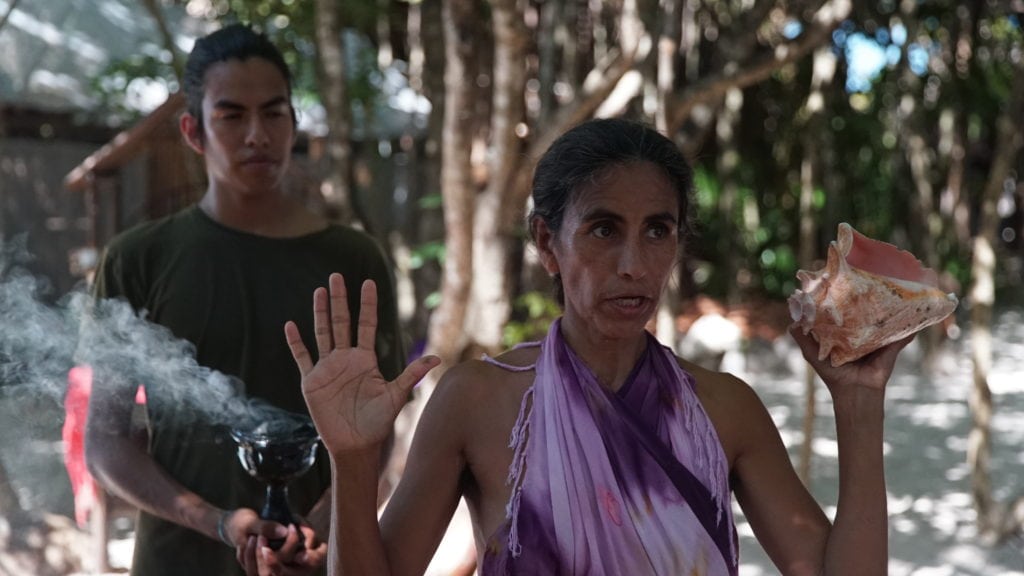
A LOCAL MAYAN SHAMAN DURING A CLEANSING CEREMONY IN TULUM
Ariel Crespo continues,
“In recent years I’ve come across a few Mayan shamans who have definitely made a difference on my view of the world, and how I relate to other people around me. Tolerance, accepting, forgiveness, “let go and move on,” spiritual growth…all that, no doubt, has made me a better person, enhanced my state of consciousness. Over a year ago, I met a wonderful Mayan shaman at Rosewood Mayakoba – Fernanda – who opened up a whole new approach on how I see myself and my daily self-improvement work—I am extremely grateful for that.”
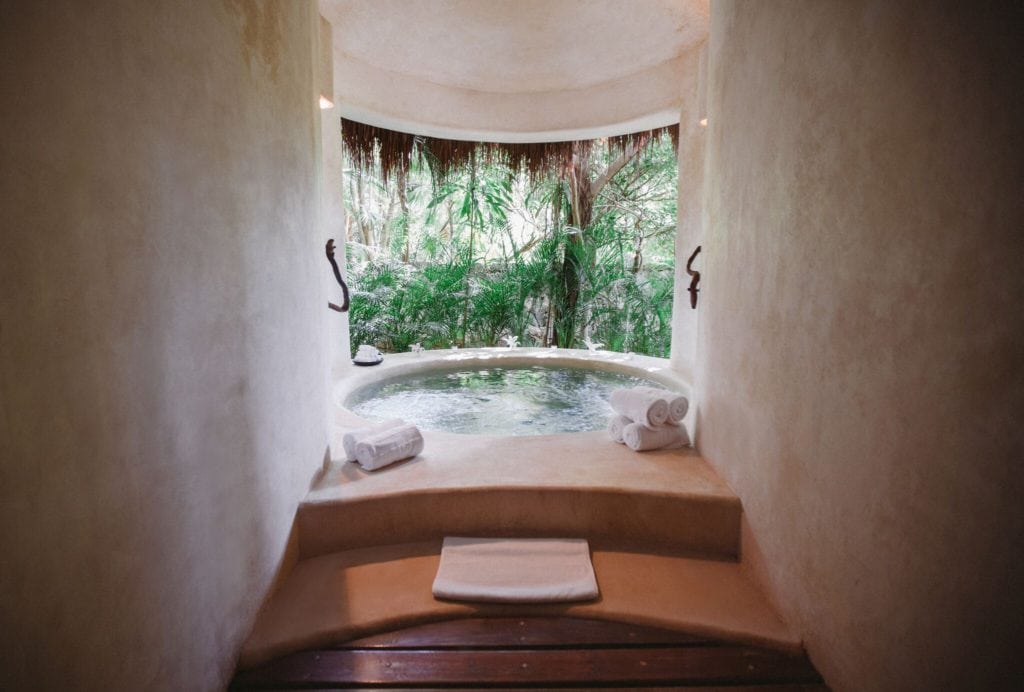
THE SPA AT HOTEL ESENCIA
A favorite traditional Mayan treatment of Dario Flota Campo is The Sacred Obsidian Stone Massage, offered by Grand Velas Spa. Obsidian was used as an offering to the gods and considered an element of protection for the noblemen and soldiers of ancient Mexico. Obsidian also maintains an internal heat. In this massage, the heat is absorbed directly by the muscular system. It is believed to activate the circulation, eliminate toxins and relax the nervous system.
“The Mayan culture of healing is very much still alive here. Our spa treatments are modern interpretations of this, a combination of the use of herbs, massage, stretching and astral and spiritual guiding,”
shares Kevin Wendle.
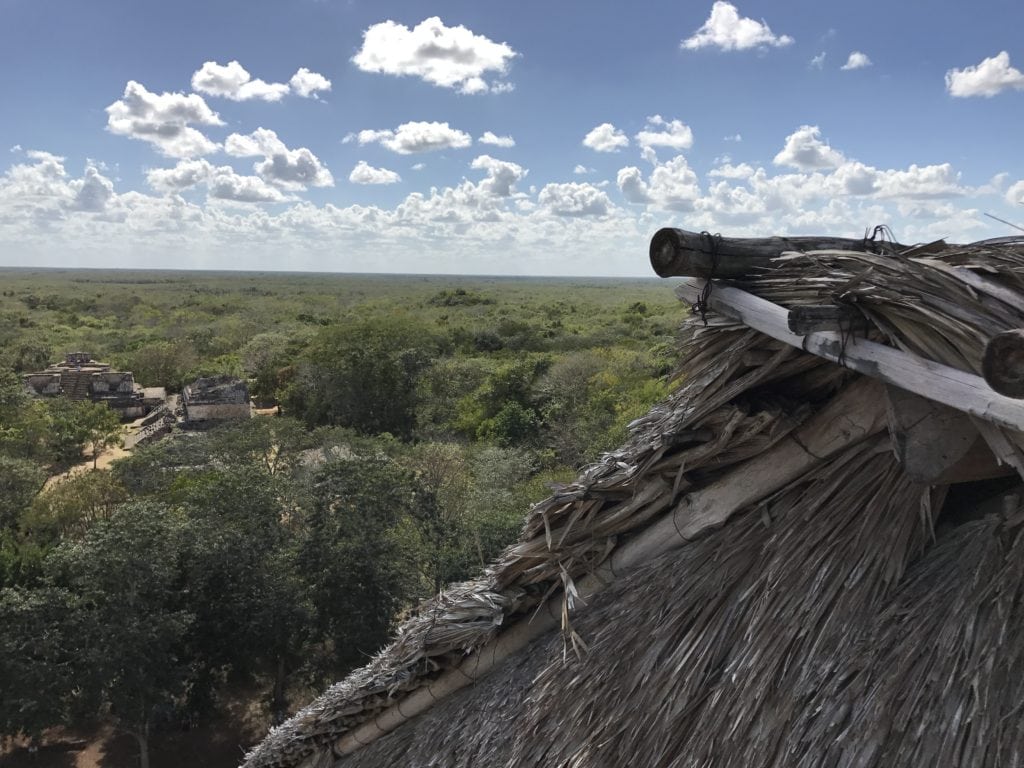
A VIEW FROM THE TOP OF THE MAYAN RUINS OF EK’ BALAM
Dario Flota Campo adds that,
“The Zona Maya is an excellent destination for an alternative, sustainable tourism, offering visitors a close-up and personal look at the Mayan community’s rich, local heritage.”
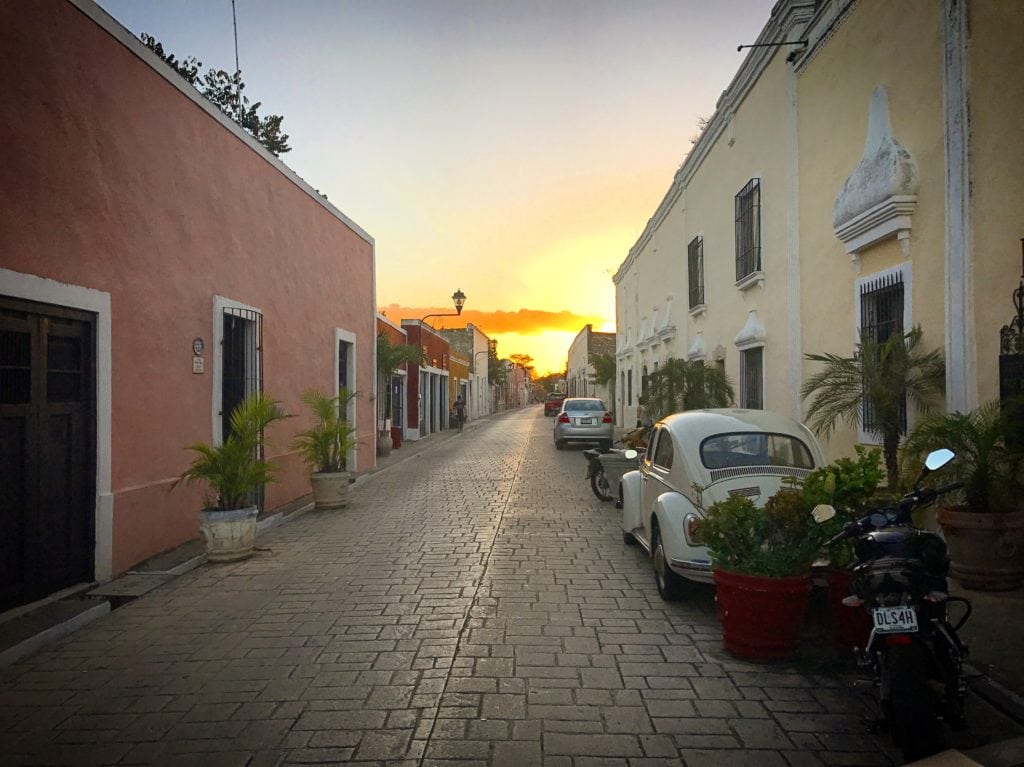
SUNSET OVER THE STREETS OF VALLODOLID OUTSIDE OF COQUI COQUI HOTEL & PERFUMERY
For travelers seeking a year-round beach getaway inclusive of nature and vibrating at a higher frequency, Riviera Maya and its indigenous inhabitants are anticipating your arrival.
